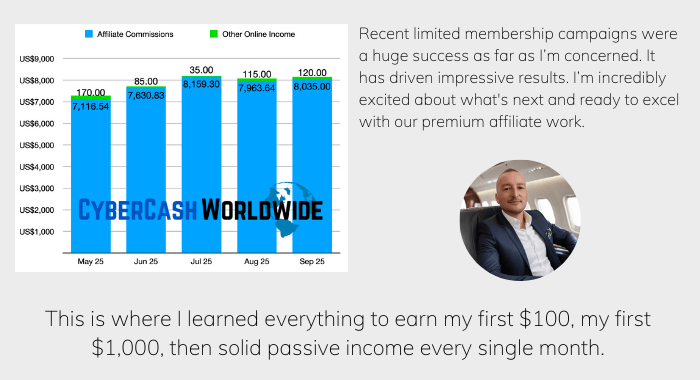Persuasion is a central part of online marketing, and I have spent years testing words that get results. Over time, I learned that even small changes in language can appear natural while encouraging customers to take action. In this piece, I present 20 influential words that grab attention and build trust. The advice here is practical—words that you can place in product descriptions, headlines, or website copy to invite your audience to act without hesitation.
If you want to improve your marketing efforts, these words are worth considering. I share my personal experience and real-life examples on how each term can be applied effectively. The language remains clear and straightforward, ensuring that your message connects quickly with potential customers.

1. "Free" - Inviting Without a Price
The word free immediately draws interest. I have seen click-through rates jump when a free offer headlines your promotion. It tells users there is no cost involved, which can ease the decision-making process. This simple term works well in emails, landing pages, and ad copy because it reduces perceived risk.
- Showcase free trials or samples.
- Include free offers as part of promotions.
The clarity of a free offer prompts users to try without worry.
2. "Because" - Explaining the Reason
Because is used to provide clear reasons behind an offer. When you include because in your message, the logic behind your benefits comes through. It helps customers feel more secure in their choices by understanding exactly why something is offered. This honest connection can make your appeal even more persuasive.
- Link features to clear benefits.
- Keep the reasoning honest and concise.
The word gives context and builds trust with your audience.
3. "Now" - Creating a Sense of Urgency
Now conveys immediacy. I have found that calls-to-action including now encourage customers to act without delay. It tells users that the offer is available right at this moment, nudging them away from procrastination. This urgency often turns hesitant interest into prompt action.
- Pair now with clear action directives.
- Mention time limits or available quantities.
Using now in your copy can drive timely engagement.
4. "Instantly" - Promising Immediate Results
Instantly is ideal when you want to promise rapid benefits. This term fits perfectly with digital offers, where outcomes can be felt immediately after a click (or transaction). Customers appreciate knowing they won’t have to wait long for the benefits promised. A clear message of prompt delivery builds confidence in your offer.
- Focus on features that deliver fast results.
- Use realistic examples without exaggeration.
Instantly reassures buyers by highlighting quick and tangible outcomes.
5. "Proven" - Establishing Trust
When I use the term proven, it adds an element of credibility. Proven indicates that the offer has been tested and validated by others. In online marketing, where trust is everything, stating that something is proven reassures potential customers of its reliability. This reassurance can be the final push that transforms interest into a sale.
- Back up claims with data or testimonials.
- Show real-life success stories.
Proven success builds a foundation of trust with your audience.
6. "Safe" - Emphasizing Security
Safe is a reassuring word. It signals that the product or service is secure and reliable. In an era where online transactions cause uncertainty, emphasizing safety can ease the customer’s worries. Whether it’s data protection or secure transactions, safe makes the buying process look secure and trustworthy.
- Highlight secure transactions or guarantees.
- Detail what makes the experience safe.
The comfort provided by safe helps potential buyers feel protected.
7. "Secret" - Sparking Curiosity
Secret is chosen to spark curiosity. It hints that there is hidden, insider information behind the offer. While not all details should be concealed, suggesting a secret can encourage the audience to read on to learn more. This sense of mystery makes customers more receptive to exploring your offer.
- Subtly hint that exclusive details lie ahead.
- Create a narrative around special insights.
A secret can pique interest and draw users into your content.
8. "Improve" - Promising Positive Change
Improve is all about signaling positive change. I use improve when discussing upgrades or refinements in a product. Customers want to see how a service will make their lives better, and improve does just that. This word implies growth and better outcomes without excessive complication.
- Mention specific improvements in features or performance.
- Keep the language clear and relatable.
Using improve lets your audience know they will see a noticeable boost in value.
9. "Easy" - Simplifying the Decision
Easy is a straightforward word that minimizes complexity. I favor using easy to indicate that using a product or service is not a burden. It removes any notion of complicated steps and appeals directly to practical-minded customers. This simplicity turns interest into action by reducing perceived obstacles.
- Mention features that simplify everyday tasks.
- Highlight user-friendly benefits clearly.
Easy serves as an invitation for customers seeking hassle-free solutions.

10. "Best" - Setting High Expectations
Best is a superlative that sets high expectations. I use best to compare your product with alternatives, signaling that it is the top choice available. Customers reading best know they are looking at a product that has been carefully chosen for its quality. It is a short, impactful word that raises the bar for perception.
- Use best carefully in competitive comparisons.
- Support the claim with real evidence or awards.
This word creates an impression of superior quality that many customers seek.
11. "Limited" - Encouraging Quick Decisions
Limited introduces a sense of scarcity. In marketing, limited suggests that an offer will not be around forever, prompting customers to act quickly. I use limited to gently pressure buyers who might otherwise delay. Limiting an offer creates urgency by indicating that there isn’t an endless supply available.
- Clarify any time or quantity restrictions.
- Maintain transparency so the scarcity feels genuine.
Limited prompts quick decision-making by highlighting what might be lost.
12. "New" - Highlighting Freshness and Innovation
New is a versatile word that draws attention by signaling freshness. When I write about new products or features, it lets customers know the offer is updated or recently developed. In today’s crowded market, a new element can set an offer apart from older options. The term communicates a modern edge.
- Feature the latest designs or innovations.
- Explain how these fresh details benefit users.
Using new creates excitement about a modern, updated offering.
13. "Exclusive" - Offering Select Access
Exclusive conveys a sense of special access reserved for a select few. I use exclusive to communicate that an offer is not available to everyone, making it feel more premium. Customers appreciate the idea of being part of a small, select group. This controlled access makes the offer appear particularly valuable.
- Limit the offer to create a privileged feel.
- Clarify what makes the offer unique and special.
Exclusive builds a bond with customers who value being in the inner circle.
14. "Guaranteed" - Building Confidence
Guaranteed reinforces confidence by assuring quality. I often include guaranteed in my messages to back up my claims with a promise of satisfaction. A strong guarantee reduces risk in a potential customer’s mind and shows faith in what is being offered. This promise is essential when building long-term trust.
- Clearly state the guarantee’s terms.
- Include specifics that support the promise.
Guaranteed tells customers they have nothing to lose by trying your product.
15. "Quick" - Demonstrating Efficiency
Quick emphasizes speed and efficiency. I choose quick to illustrate that benefits or responses will be delivered without delay. In today’s fast-paced digital world, customers value speedy service. By using quick, you tap into the need for rapid results and a no-hassle experience.
- Highlight elements that ensure fast action.
- Combine quick with a direct call to act immediately.
This term reassures buyers that they won’t have to wait for the results they desire.
16. "Powerful" - Emphasizing Impactful Results
Powerful describes offers that deliver strong, noticeable outcomes. I use powerful to convey that a product or service brings significant benefits. This word captures the strength of an offer in a way that’s both engaging and encouraging. It assures customers they are choosing a solution that truly makes a difference.
- Support claims with data or success examples.
- Be concise about the tangible benefits.
Powerful promises a marked and positive impact on your customers’ lives.
17. "Save" - Emphasizing Cost Benefits
Save is used when highlighting discounts or cost benefits. I include save to tap into the natural desire to keep more money in your pocket. When customers see save paired with an offer, it underscores a practical advantage. It’s a straightforward term that appeals directly to budget-conscious buyers.
- Specify what costs or expenses are reduced.
- Use clear examples to demonstrate savings.
Save connects with customers by providing a practical reason to take action now.
18. "Stumble Upon" - Encouraging Exploration
This word, formerly known as discover, inspires curiosity and engagement. I use stumble upon to suggest that there is something valuable waiting if customers take the next step. It invites them to check out what lies beneath the surface. This subtle invitation motivates a closer look without overwhelming details.
- Pair it with calls-to-action that invite exploration.
- Offer concise insights that encourage further reading.
Stumble upon triggers an emotional response that makes exploring your offer enticing.
19. "Results" - Highlighting Measurable Outcomes
Results is my go-to word when emphasizing measurable benefits. I use results to signal clearly that an offer has been effective and provides tangible benefits. This emphasis on visible outcomes reassures potential customers that promises are backed by real evidence. Being specific with results can help convert curiosity into commitment.
- Include concrete examples or numbers where possible.
- Keep statements factual to avoid exaggeration.
Results demonstrate reliability and help build a case for the quality of your offer.
20. "Ultimate" - Presenting the Best Option
Ultimate conveys that a product or service is the definitive, top-tier choice. I use ultimate to indicate finality and superior quality, ensuring the customer feels they are opting for the very best. This term sets a benchmark that stands above all others in the market. It provides a strong close to any persuasive message.
- Support the claim with comparisons or detailed benefits.
- Ensure that the promise of excellence is clear.
Ultimate wraps up the list by giving customers a final assurance of top performance.
Wrapping Up
Words are the foundation of persuasive communication. I have shared these 20 powerful terms because each one offers a unique edge in online marketing. From creating urgency with now and instantly to building trust with proven and guaranteed, every word was chosen for its impact. Clear, approachable language can inspire confidence and turn interest into action.
Using these terms effectively in product descriptions, headlines, and ad copy can transform your marketing outcomes. Test different words and watch how a simple change in language can make a big difference. Which word will you focus on to sharpen your message? The guidelines above are designed to help you connect with your audience and improve your results.

